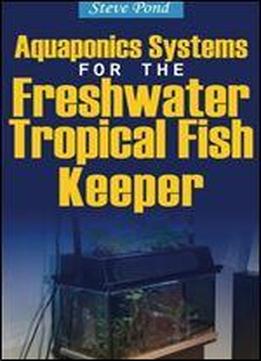This book, written by world experts in aquaponics and related technologies, provides the authoritative and comprehensive overview of the key aquaculture and hydroponic and other integrated systems, socio-economic and environmental aspects. aquaponic systems, which combine aquaculture and vegetable food production offer alternative technology. Aquaponics is suitable for environments with limited land and water because it produces about three to six times the vegetables (resh 2004) and uses about 1% of the freshwater used by traditional aquaculture (rakocy 1989). sneed et al. (1975) published the first description of an aquaponic system, which diverted. Aquaponics is residue-free, and avoids the use of chemical fertilizers and pesticides. aquaponics is a labour-saving technique, and can be inclusive of many gender and age categories. in the face of population growth, climate change and dwindling supplies of water and arable land worldwide, developing efficient and integrated agriculture.
The ibc of aquaponics manual is an interactive pdf; with links to youtube and google sketchups of up to 20 systems and an interactive menu. all systems were designed and created by contributors of the backyard aquaponics forum across the globe, from the usa to hungary to australia.. It is arguably one of the (if not “the”) most complete aquaponics books available at any price. it literally has everything you need to know. for us americans, it is useful to have metric conversion tables handy – the measurements and temperatures are metric and some of us are too stubborn to learn the metric system. from the fao’s website:. It takes hard work. julio states that, although aquaponics is a mixture of aquaculture and hydroponics, it easy and fun to grow your vegetables and organic fruits. the book contains 50 pages and is one of the best aquaponics books. as part of the introduction, the book has outlined the benefits of aquaponics..




0 komentar:
Posting Komentar